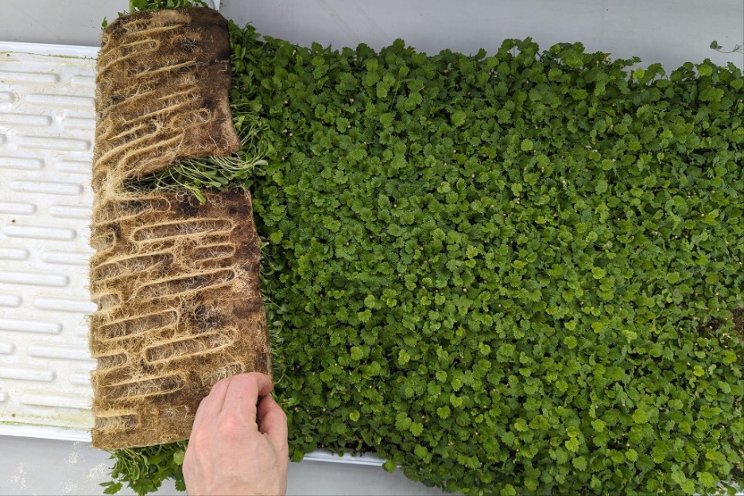Re-Nuble's strategy of mitigating farmers' mold and algae
Added on 12 September 2024

The Role of Oxygen in Hydroponic Substrates
Oxygen is essential for root respiration, which enables roots to absorb nutrients and water efficiently. Providing adequate oxygen to the roots becomes even more crucial in hydroponic systems, where plants are grown in a nutrient solution rather than soil. Hydroponic substrates like coco coir, perlite, and rock wool can hold water effectively, but without proper oxygenation, these mediums can become breeding grounds for mold and algae.
Oxygen deficiency in hydroponic substrates can lead to anaerobic conditions conducive to mold growth. High levels of algae growth also deplete oxygen levels in the water. This is particularly problematic for microgreens, which grow in dense populations and are very young plant starts. They are tender and less resilient than mature plants to floods, droughts, bacteria, and fungi. The compact nature of microgreens and the tendency of hydroponic substrates to retain moisture create an environment where mold and algae can thrive if oxygen levels are not carefully managed.
Impact of Excess Water and Poor Aeration
Learning how to irrigate crops properly is the most crucial skill any grower can learn. A lot of people assume that it’s easy. You know that plants like water, and without it, they die. So beginner growers tend to give as much water as they can. Over-saturation of substrates can lead to waterlogged conditions, reducing the amount of oxygen available to the roots. This creates an ideal environment for mold spores and algae to germinate and grow. I like to think of this balance as the gas-to-clutch relationship in a car. As you add water to the substrate, some oxygen is being pushed out of crevices and spaces. Oxygen fills crevices and spaces as the roots take up the water or evaporate. Well-aerated substrates are essential for healthy root systems and to prevent the build-up of pathogens. Balancing oxygen and water in the substrate is critical to growing solid plants. Avoid extremes.
Practical Strategies for Balancing Water and Oxygen
To mitigate these issues, it's essential to adopt strategies that enhance aeration and manage moisture levels effectively. Here are a few practical tips:
- Optimize Substrate Choice: Select hydroponic substrates that offer good aeration properties. Microgreen mats are typically designed to provide good aeration but vary in material and composition, so finding the right mat for your system is essential. If you grow in the soilless or potting mix, perlite and vermiculite provide excellent drainage and air retention, reducing the risk of mold and algae. While amazing for moisture retention, Coco coir should be mixed with other substrates to improve aeration.
- Monitor Watering Practices: Avoid over-watering using a well-calibrated irrigation system that delivers the right amount of nutrient solution. Implementing a cycle that allows the substrate to partially dry between waterings can help maintain the necessary balance of moisture and oxygen. Remember, avoid extremes.
- Improve Air Circulation: Ensure proper ventilation and air circulation around your plant canopy. Using fans can help increase airflow and reduce microclimates and stagnant air, lowering the risk of mold and algae growth.
- Regular Maintenance: Inspect your growing medium and system for signs of mold or algae. Promptly addressing any issues and cleaning your equipment can prevent the spread of these problems.
Conclusion
Balancing water and oxygen in hydroponic substrates is fundamental to growing healthy microgreens. By ensuring that your substrates are well-aerated and avoiding excessive moisture, you can mitigate the risks of mold and algae, leading to a more productive and resilient crop. As hydroponic growers, staying attuned to the needs of your substrates and implementing these practical strategies will help you achieve the best results in your microgreens cultivation.
ReNu Terra Grow Mats provide the best oxygen-to-water ratio, helping prevent excessive waterlogging and lower oxygen levels, which can lead to root death and disease. Due to ReNu Terra Mats's porous makeup, they are less susceptible to mold and algae than other grow mats on the market.
We design products for growers with growers. Unlock your yield potential here.
More news















